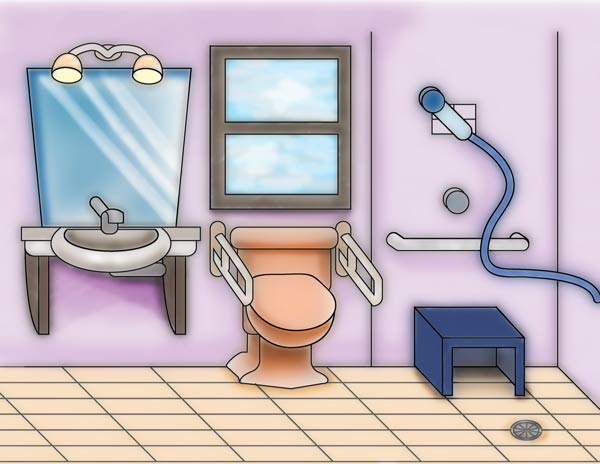The Art of ‘Aging in Place’
Interior design students examine making homes accessible for the elderly
September 19, 2014
 Clarion Illustration by Christopher Pinkert
Clarion Illustration by Christopher Pinkert
As the average age of Americans continues to increase, many older people are faced with the prospect of leaving the dwellings that they have spent their entire lives living in.
At Madison College, second year interior design students are attempting to mitigate those challenges in their “Trends and Issues” class by re-imagining interior design for aging persons. Design Instructor Dustin Struckmeyer created the “Aging in Place” project to address these issues.
“This (aging populations) is one of the most important trends in our field. There will be over 70 million people over the age of 65 very soon,” Struckmeyer explained.
According to the Administration on Aging, a subsidiary of the Department of Health and Human Services, there will be over 70 million “older persons” (defined as over the age of 65) by the year 2030. The figure projects to be double the amount of older persons in the United States in the year 2000.
The Aging in Place project had been solely a written paper until this year, when Struckmeyer expanded the project to allow for a more hands-on approach. The project will now involve students visiting real home sites to document, measure, and photograph living situations. The outcome will be a written document complete with descriptions, images, and suggestions for changes homeowners can make to improve the livability of their dwelling.
“Student’s will be prepared with basic questions and from there it will be their responsibility to assess the home,” Struckmeyer said, pointing out that he sees the project as being mutually beneficial. “It’s really an equal exchange- the homeowners will be getting recommendations or reinforcement of changes they need to make or have already made.”
Being a design course, the project aims for more than purely utilitarian results. Citing the “designers creed,” Struckmeyer said that the student’s job is to be mindful of creating a space that people can live in safely, while still creating something beautiful.
“The challenge is to make a space work- making it safer and more useful- and being able to make it
attractive,” he explained.
Much of the background for the project comes from the Certified Aging in Place Specialist (CAPS) program development. The CAPS designation was developed by the National Association of Homeowners Council in an effort to certify that professionals have been trained “in the unique needs of seniors.”
Many of the CAPS requirements have made their way into the Aging in Place project.
“The idea is not to grow old in a home somewhere else, it’s that you’ll stay where you are,” Struckmeyer said. “Growing old doesn’t mean leaving for another location.”
The Trends and Issues class will take up the project during the middle of the semester. Currently, Struckmeyer has three homeowners interested in opening up their homes for students of the class. He hopes to have ten participants by the time the project begins.
Homeowners interested in allowing the class to use their home for the project can contact Struckmeyer at (608)-243-4154.






























